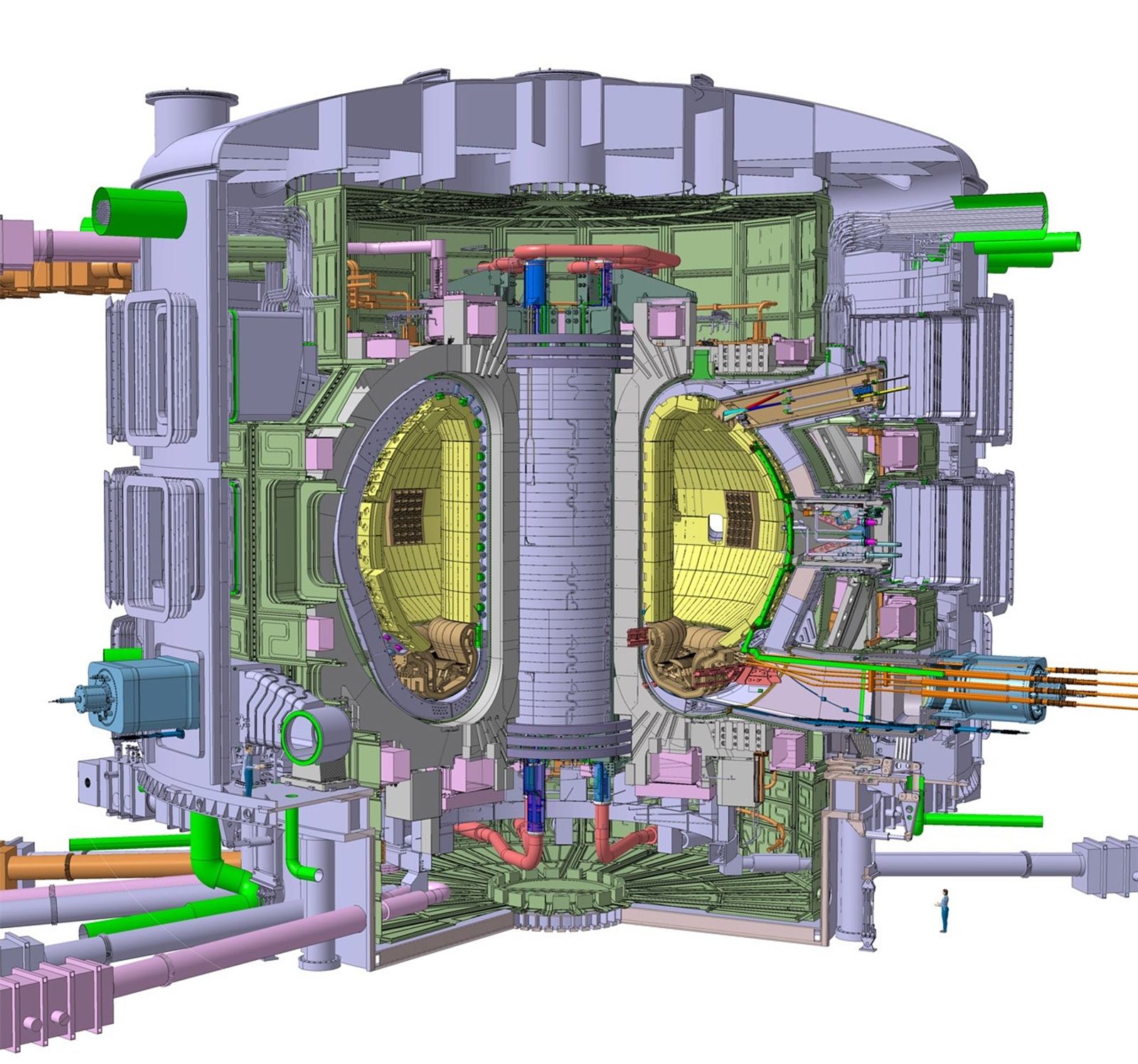ITER
ITER is an experimental fusion reactor according to the tokamak principle which for the first time will generate a plasma with power reactor-like properties over a longer time period (up to about 300 seconds). The investigations on plasma physics will focus on all aspects of a burning plasma which essentially is maintained by alpha-heating. Alpha heating means the transfer of kinetic energy of alpha particles originating from the fusion reaction to the plasma particles (electrons and ions).

Furthermore, key technologies for a fusion power station (plasma heating, super-conducting magnets, plasma facing components, fuel cycle and remote handling) will be tested under power reactor-like conditions. ITER is also capable to perform first tests of blanket concepts by suitable test modules.
| Fusion power | 500 MW |
| Q = fusion power / heating power (without alpha heating) | ≥ 10 |
| Average neutron wall load | 0,57 MW/m2 |
| Plasma pulse time | <= 300 seconds |
| Plasma current (induced by transformer) | 15 MA |
| Plasma Volume | 837 m3 |
| Installed external heating | 73 MW |
| Toroidal magnetic field | 5.3 Tesla |
ITER will be realized in co-operation of the European Union, Japan, the Russian Ferderation, USA, People’s Republic of China, South Korea, and India at the site of Cadarache, Southern France. The construction time will be about 8 years, after an operation time period of 10 years results are expected which make it possible to construct a prototype power reactor.
- For technical design and construction of big complex components for ITER industrial companies from 7 European countries have founded the interest group EFET (European Fusion Engineering and Technology) German industrial companies and BDI (umbrella organization of German industry) have founded the Deutsche ITER-Industrie-Forum e.V. on March 8, 2007 at Karlsruhe.
